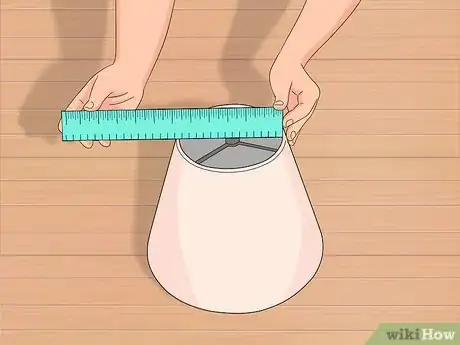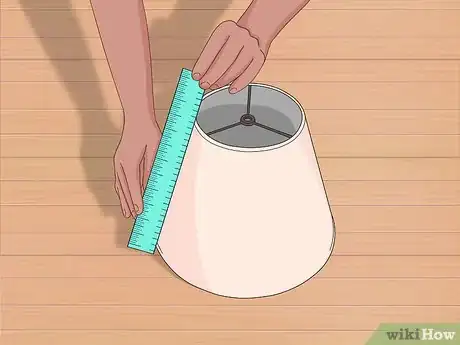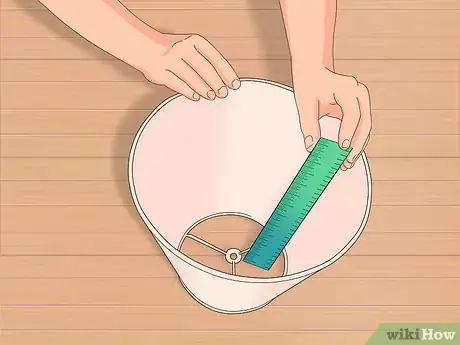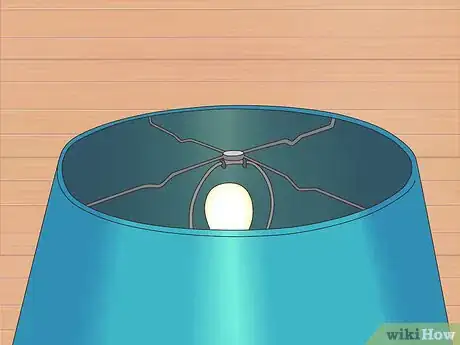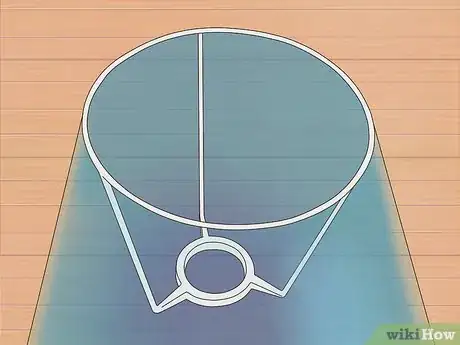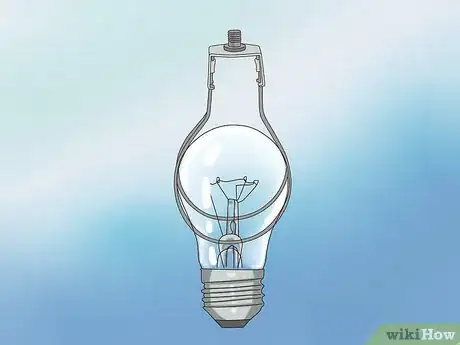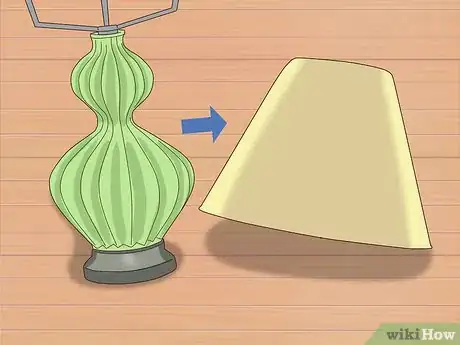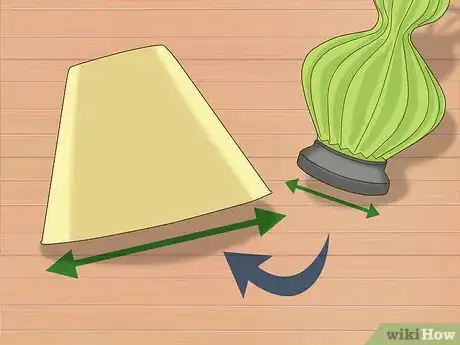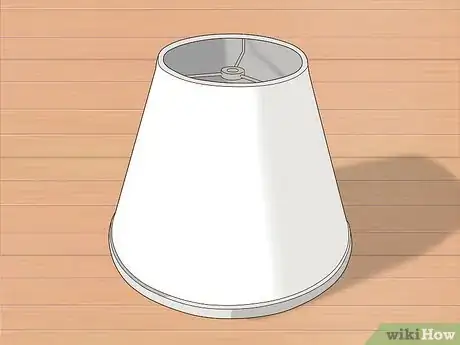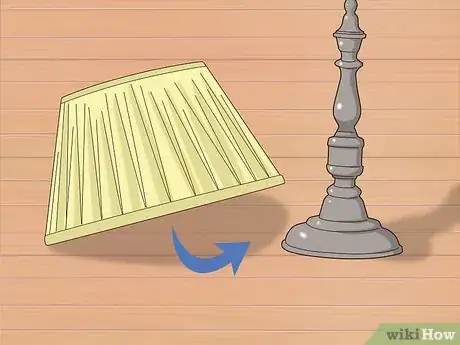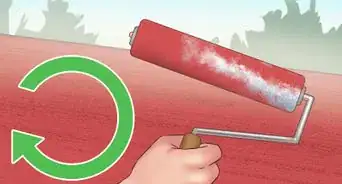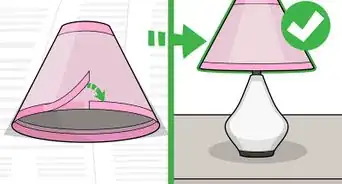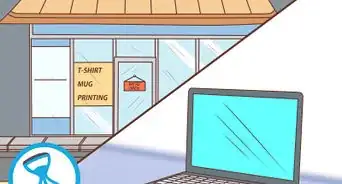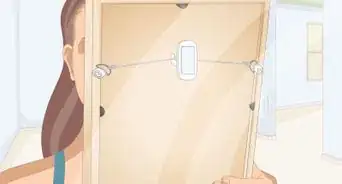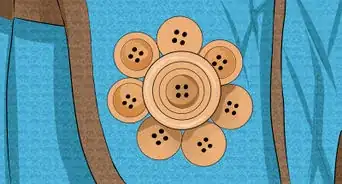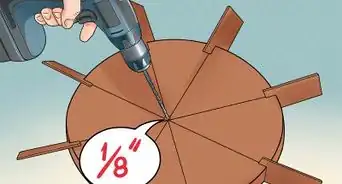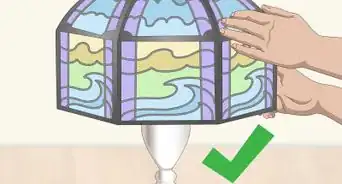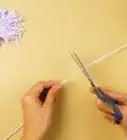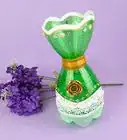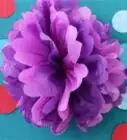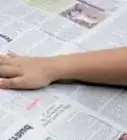This article was co-authored by wikiHow Staff. Our trained team of editors and researchers validate articles for accuracy and comprehensiveness. wikiHow's Content Management Team carefully monitors the work from our editorial staff to ensure that each article is backed by trusted research and meets our high quality standards.
There are 12 references cited in this article, which can be found at the bottom of the page.
This article has been viewed 52,726 times.
Learn more...
Lampshades come in all shapes and sizes and can be paired with the right sized lamp base when fitted well. The right lampshade can provide an accent to your home’s décor. You must know how to measure one to make sure it fits your lamp well. You also need to understand which fittings are ideal for different lamps. .
Steps
Measuring the Lampshade
-
1Measure the top diameter with a ruler. Hold a ruler over the top of the lampshade, and measure from one side of the circle to the other. Use inches or centimeters depending what unit you’re most comfortable with.[1]
- Write the measurement down so you remember it.
-
2Flip the lampshade over and measure the bottom diameter. Place the ruler over the bottom opening of the lampshade and measure it from one side to the other. Using inches or centimeters, record the measurement on paper for your reference.[2]
- If the lamp’s neck is exposed from under the lampshade, that means you need a longer lampshade.
Advertisement -
3Measure the side height of the lampshade. Flip the shade over so the top is facing up and measure the side of the shade with a ruler. The height is measured from top to bottom.[3] Your shade should be 2/3 the height of the lamp base.[4]
- If the lamp is too tall for the shade, the harp will be exposed and cause a top-heavy effect.
- If your lamp is going to sit at eye level, it’s important to make sure the shade will be tall enough to cover the harp.
-
4Measure the holder drop height. This is the distance from the top of the lampshade to the fitter. The fitter is the metal piece inside that holds the lampshade on the lamp. To measure the holder drop height, turn the lampshade upside down and hold the ruler from the top of the lampshade to the end of the holder drop.[5]
Choosing a Lampshade Fitting
-
1Pair a spider fitting with a harp lamp. The harp attaches to the lamp base, and the spider fitting sits on top of the harp. You use a finial to screw the fitting on top of the harp. The shade sits on top of the removable metal harp of your lamp.[6]
-
2Put an UNO fitting on smaller table lamps and swing arm wall lamps. An UNO fitting attaches directly to the lamp socket via an inner ring, which is held in place by the bulb. Installing one doesn’t require tools. All you need to do is screw in the bulb and attach the shade.[7]
- An UNO fitting is also recommended for bridge arm floor lamps.
- UNO fitters can be found on small and medium shades, and rarely on large and oversized shades.
-
3Use a clip-on fitting for small accent lamps, nightlights, and chandeliers. This is a wire fitting that clips directly onto the lightbulb. There are different clip-on sizes, so make sure that the one you choose matches the size and shape of your lightbulb. Clip-on lampshades come in different sizes such as bell, conical, coolie, cylindrical, and drum shape.[8]
- Hexagonal shades can be paired with rustic rooms.
- Empire style shades match every base and room design.
Choosing a Style
-
1Select a lampshade to match the lamp’s base shape. As a general guideline, the lamp’s base should match the shape of the shade. If the lamp has a round base, you should use a round lampshade. Use a square shade on a lamp with an angular or square silhouette. However, there are exceptions to these rules.[9]
- For example, candlestick lamps have many curves and angles, so they can be paired with any lampshade.
- Pair a round shade with a square lamp that’s sitting on a round table.
-
2Pick a lampshade that’s wider than the baseplate. Some lamps have flat, round baseplates, so a lampshade that’s wider than that will give the lamp a balanced look. With a wider lampshade, the lamp won’t look unbalanced. Vice versa, if the lampshade is decorative, choose a simple base[10]
-
3
-
4Pair pleated lampshades with antiques for a cozy vibe. Pleated shades go with Victorian era and other antique lamps. Bell shapes are also ideal for a Victorian-style lamp and antique décor.[13]
References
- ↑ https://youtu.be/osFD0Wml7xY?t=23
- ↑ https://youtu.be/osFD0Wml7xY?t=28
- ↑ https://youtu.be/osFD0Wml7xY?t=40
- ↑ https://www.ballarddesigns.com/howtodecorate/2019/03/choose-right-lamp-shade/
- ↑ https://youtu.be/osFD0Wml7xY?t=56
- ↑ https://youtu.be/Bh6McSZZ52s?t=45
- ↑ https://www.destinationlighting.com/fliptheswitch/what-is-an-uno-lamp-shade/
- ↑ https://www.destinationlighting.com/fliptheswitch/what-is-a-clip-on-lamp-shade/
- ↑ https://www.ballarddesigns.com/howtodecorate/2019/03/choose-right-lamp-shade/
- ↑ https://youtu.be/V7OnaRqTQL4?t=100
- ↑ https://youtu.be/Psy_ryBVbXQ?t=39
- ↑ https://youtu.be/plbZUNRNQiw?t=46
- ↑ https://www.ballarddesigns.com/howtodecorate/2019/03/choose-right-lamp-shade/
- ↑ https://www.ballarddesigns.com/howtodecorate/2019/03/choose-right-lamp-shade/
- ↑ https://www.ballarddesigns.com/howtodecorate/2019/03/choose-right-lamp-shade//
